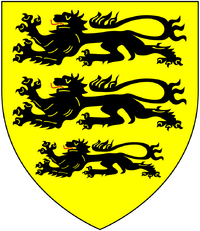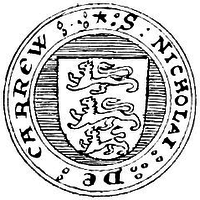Moulsford
| Moulsford-on-Thames | |
| Moulsford from the River Thames |
|
 Moulsford-on-Thames |
|
| Area | 7.24 km2 (2.80 sq mi) |
|---|---|
| Population | 526 (2001 census)[1] |
| – density | 73/km2 (190/sq mi) |
| OS grid reference | SU585835 |
| Civil parish | Moulsford |
| District | South Oxfordshire |
| Shire county | Oxfordshire |
| Region | South East |
| Country | England |
| Sovereign state | United Kingdom |
| Post town | Wallingford |
| Postcode district | OX10 |
| Dialling code | 01491 |
| Police | Thames Valley |
| Fire | Oxfordshire |
| Ambulance | South Central |
| EU Parliament | South East England |
| UK Parliament | Wantage |
| Website | Moulsford Village Website |
|
|
Coordinates: 51°33′04″N 1°08′42″W / 51.551°N 1.145°W
Moulsford is a village and civil parish and former manor in South Oxfordshire. Before 1974 it was in the county of Berkshire, in Wallingford Rural District, but following the Berkshire boundary changes of that year it became a part of Oxfordshire, in the district of South Oxfordshire. Moulsford is on the A329, by the River Thames, just north of Streatley and south of Wallingford. The west of the parish is taken up by the foothills of the Berkshire Downs, including the Moulsford Downs (a site of special scientific interest), Moulsford Bottom and Kingstanding Hill which is traditionally associated with King Alfred and the Battle of Ashdown. Like many other villages in Oxfordshire and Buckinghamshire it has been used for the filming of Midsomer Murders.
Parish church
Moulsford parish church began as a chapelry of Cholsey.[2] The first known record of the chapel dates from between 1220 and 1227.[2] The botanist and geologist John Stevens Henslow was its vicar in the 1830s. In 1846 most of the mediaeval church was demolished and the current Church of England parish church of Saint John the Baptist, designed by Sir George Gilbert Scott, was built on its foundations.[2] Scott's Gothic Revival building retains the west wall of the original church, which includes a 13th-century Early English Gothic lancet window, and the timber frame of the bellcote.[2]
Other notable buildings
- Moulsford Railway Bridge, situated just north of the village on the Great Western Main Line, designed by Isambard Kingdom Brunel and built in 1838–39.
- Fair Mile Hospital, a former lunatic asylum at Moulsford from 1870 to 2003, originally named the Moulsford Asylum.[3]
- The Beetle and Wedge public house, east of the village centre on the River Thames, on the site of a former ferry crossing.
History
Pre-Norman Conquest
The Bronze Age 'Moulsford Torc' was discovered in the parish and bought by the Museum of Reading with the aid of a grant from the Art Fund in 1961. It is a hoop-shaped decorative neck ornament, made of four spirally-twisted gold-alloy strips held together by a delicate piece of twisted gold wire.
Post Norman Conquest
Descent of the manor
In the Middle Ages until 1497 the manor of Moulsford was a principal seat of the prominent Carew family,[4] also seated at Carew Castle in Pembrokeshire and later at Mohuns Ottery in Devon. The manor of Moulsford is not listed in the Domesday Book of 1086 and is believed at that time to have been included within the royal manor of Cholsey.
Carew

The descent of the manor in the Carew family was as follows:
- Gerald de Windsor (c.1075-1135)(alias Gerald FitzWalter, Gerald son of Walter), Constable of Pembroke Castle in the Kingdom of Deheubarth, Wales, who received Moulsford by grant of King Henry I (1100-1135).[6] He was the husband of Nesta ferch Rhys (c.1085, d.pre-1136), the mistress of King Henry I and the only legitimate daughter of Rhys ap Tewdwr (before 1065 – 1093), Prince of Wales,[7] the last King of Deheubarth[6] in Wales, by his wife Gwladys ferch Rhiwallon ap Cynfyn of Powys. The Carew's seat of Carew Castle, Pembrokeshire, was in the Kingdom of Deheubarth. He was the second son of Walter FitzOther, Constable of Windsor Castle in Berkshire, a principal royal residence, by his wife Gladys ap Conwyn, daughter of Rywallon ap Conwym, Prince of North Wales. As the Fitz prefix to his surname suggests, Walter was the son of Otheus, an Anglo-Saxon who had been Constable of Windsor Castle during the reign of King Edward the Confessor (1042-1066).[8]
- William FitzGerald de Pembroke (d.circa 1174), son and heir.[6]
- Raymond FitzGerald le Gros ("The Fat"), eldest son and heir, who received seizin of his father's lands. He was a knight and a distinguished commander in the military force which invaded Ireland in 1170. He married Basile, sister of Gilbert de Clare, 1st Earl of Pembroke (1100–1147) "Strongbow", but died without progeny.[6]
- Odo FitzGerald de Pembroke, younger brother and heir,[6] who adopted the surname Carrio,[7] apparently in reference to his principal seat of Carew Castle, in the Welsh Kingdom of Deheubarth, and was thus the first of the Carew family. In 1194 he disputed the claim of Geoffrey de Cholsey to land in Moulsford, possibly the manor itself.
- William FitzOdo (alias William de Carrio),[6] eldest son and heir. In 1195 he settled his father's dispute with the de Cholsey family by payment of a fine to the royal treasury. However, in 1207 he again paid a fine, of 40 ounces of gold, not to be impleaded by Geoffrey de Cholsey, and it was made known that King John wished William de Carrio "to remain in peace thereof".[6] In 1212 he received from King John a confirmation of the grant by King Henry I to his great-grandfather Gerald de Windsor (fl.1100/35).[6]
- Nicholas de Carew (d.circa 1228), son and heir.[6]
- William de Carew, son and heir, a minor at his father's death. He became a ward of King Henry III (1216-1272). The wardship of the manor of Moulsford was granted successively to John Marshall, and from July 1228 to Bertram de Crioil, Constable of Dover Castle. William de Carew appears to have held an estate in County Waterford from the king by serjeanty in 1277.[6]
- Nicholas Carew (d.circa 1286), son and heir, who married Avice Tute,[6] daughter and heiress of Richard Tute (alias Tuitt) of Marston in County Westmeath in Ireland.[9] He went to Ireland in 1284 but had returned to England by the time of his death.

- Nicholas Carew (died 1311), son and heir, who in 1300–1 was summoned to Parliament by writ of King Edward I (1272-1307) as Dominus de Moulsford ("lord of the manor of Moulsford") by which he is deemed to have become Baron Carew.[10] As Nic(olae)us de Carru, D(omi)n(u)s de Mulesford ("Nicholas de Carew, lord of the manor of Moulsford") he was one of 103 signatories of the Barons' Letter of 1301 addressed to Pope Boniface VIII as a repudiation of his claim of feudal overlordship of Scotland and as a defence of the rights of King King Edward I of England as overlord of that kingdom.
References
- ↑ "Area: Moulsford CP (Parish): Parish Headcounts". Neighbourhood Statistics. Office for National Statistics. Retrieved 18 March 2010.
- 1 2 3 4 Page & Ditchfield, 1923, pages 504-507
- ↑ "Fair Mile Hospital". www.berksfhs.org.uk. UK: Berkshire Family History Society. Retrieved 22 August 2015.
- ↑ Royal Berkshire History: Moulsford Manor
- ↑ Debrett's Peerage, 1968, Carew Baronets, p.155; Baron Carew p.216; These were the arms shown on the seal of Nic(olae)us de Carru (c.1255–1311), appended to the Barons' Letter, 1301 and blazoned in the 1301 Caerlaverock Roll of Arms
- 1 2 3 4 5 6 7 8 9 10 11 VCH
- 1 2 Vivian, p.133
- ↑ Vivian, Lt.Col. J.L., (Ed.) The Visitations of the County of Devon: Comprising the Heralds' Visitations of 1531, 1564 & 1620, Exeter, 1895, p.133, pedigree of Carew
- ↑ Vivian, p.134
- ↑ VCH, note 44, quoting: Parliamentary Writs (Record Commission), Vol.I, p.104
Sources and further reading
- Victoria County History: A History of the County of Berkshire, Volume 3, Page, William & Ditchfield, P.H. (eds.), 1923, pp. 504–7
- Pevsner, Nikolaus (1966). The Buildings of England: Berkshire. Harmondsworth: Penguin Books. p. 179.
External links
-
 Media related to Moulsford at Wikimedia Commons
Media related to Moulsford at Wikimedia Commons
